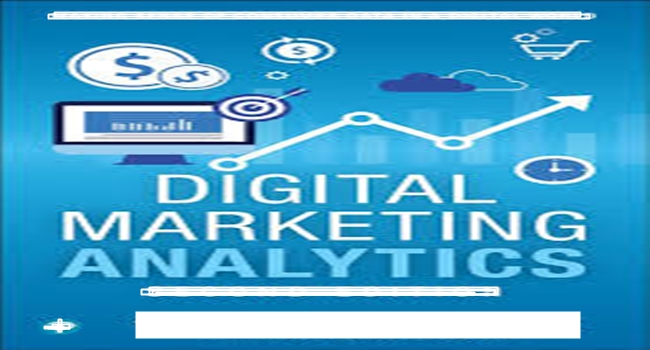In this article, we discussed the meaning of digital marketing analytics, the types, the benefits, examples, we also talked about the tools.
Definition
Digital marketing analytics” refers to the practice of collecting, analyzing, and interpreting data from various digital marketing channels like websites, social media, email campaigns, and paid advertising to gain insights about audience behavior, measure campaign performance, and make data-driven decisions to optimize marketing strategies and improve ROI.
The types digital marketing analytics include:
Descriptive Analytics:
Provides a snapshot of current performance by looking at basic metrics like website traffic, page views, and demographics, answering “what is happening now?”.
Predictive Analytics:
Uses data to forecast future trends and customer behavior, allowing for targeted campaigns and better audience segmentation.
Prescriptive Analytics:
Builds on predictive analytics by suggesting actionable steps to optimize outcomes based on predicted trends.
Engagement Metrics:
Measures user interaction on social media platforms through likes, shares, comments, and time spent on content.
Conversion Analytics:
Tracks the effectiveness of marketing campaigns by measuring conversion rates (e.g., form submissions, purchases) from specific actions.
SEO Analytics:
Analyzes website performance in search engine results pages (SERPs) to identify relevant keywords and optimize content for better rankings.
Campaign Optimization Analytics:
Examines data from individual marketing campaigns to identify areas for improvement and maximize ROI.
Social Media Analytics:
Tracks user engagement across social media platforms to understand audience sentiment and optimize content strategy.
Important points to remember:
Data collection:
Digital marketers need to carefully collect data from various sources like website analytics, CRM systems, and social media platforms.
Data analysis:
Interpreting data to identify patterns and insights is crucial for making informed marketing decisions.
Actionable insights:
The goal of analytics is to generate actionable insights that can be used to optimize campaigns and improve marketing strategies.
Benefits of using analytics in digital marketing:
Enhanced Customer Insights:
Analyze customer data to understand preferences, buying behavior, and engagement patterns, leading to more relevant marketing strategies.
Targeted Campaign Creation:
Develop personalized campaigns based on customer demographics and behavior, maximizing reach and conversion rates.
Campaign Optimization:
Track key metrics like click-through rates, conversion rates, and bounce rates to identify areas for improvement and adjust campaigns accordingly.
Data-Driven Decision Making:
Rely on concrete data to inform marketing strategies, allocating resources efficiently and minimizing guesswork.
Improved ROI:
By understanding which marketing channels and tactics are most effective, businesses can maximize return on investment.
Real-time Monitoring:
Monitor campaign performance in real-time, allowing for quick adjustments and immediate response to changing trends.
Customer Engagement:
Analyze customer interactions to identify opportunities for better engagement and build stronger customer relationships.
Competitive Analysis:
Compare your marketing performance against competitors to identify areas for improvement and gain a competitive edge.
Content Optimization:
Analyze website traffic data to understand which content performs best and refine content strategy accordingly.
Attribution Modeling:
Accurately measure the impact of different marketing channels on conversions, providing valuable insights into campaign effectiveness.
The examples of digital marketing analytics:
Identifying high-performing campaigns:
Analyze data to pinpoint which marketing campaigns are generating the most leads or sales, allowing you to allocate more resources to those efforts.
Optimizing underperforming campaigns:
Use analytics to identify campaigns that aren’t performing well and make adjustments to improve their results, such as testing different ad copy or targeting strategies.
Customer behavior insights:
Gaining a deeper understanding of how customers interact with your website and marketing materials to personalize their experience and tailor messaging accordingly.
A/B testing:
Utilizing analytics to compare different variations of landing pages, email subject lines, or ad creatives to see which performs best with your target audience.
Monitoring spends and ROI:
Tracking key metrics like cost per acquisition (CPA) to ensure your marketing budget is being effectively allocated across different channels.
Social media analytics:
Analyzing engagement metrics on social platforms like Facebook, Twitter, and Instagram to understand audience sentiment and optimize content strategy.
Email marketing analytics:
Tracking open rates, click-through rates, and conversion rates from email campaigns to measure their effectiveness.
Search engine optimization (SEO) analytics:
Monitoring website ranking and organic search traffic to identify areas for improvement on search engines.
Predictive analytics:
Using historical data to forecast future trends and customer behavior, allowing for proactive marketing strategies.
Some key analytics tools used by digital marketers include:
Google Analytics (for website traffic analysis)
HubSpot (for content marketing analytics)
Semrush (for competitor analysis and backlink tracking)
Mixpanel (for user behavior analysis)
Ahrefs (for SEO analysis and competitor research)
Mailchimp (for email marketing analytics)
Sprout Social (for social media analytics)
Adobe Analytics (for comprehensive cross-channel analysis)
Google Ads (for campaign performance tracking within Google Ads platform.
Conclusion
Digital marketing analytics is the practice of collecting, analyzing, and interpreting data from various online channels like websites, social media, and ad campaigns to gain insights into customer behavior and optimize marketing strategies, allowing businesses to make informed decisions to improve campaign performance and maximize ROI across their digital platforms.

